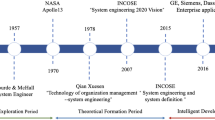Abstract
At present, there are many ways to express knowledge, all of which play an important role in information system. However, these knowledge representation methods cannot reduce the contradiction between knowledge, nor can they effectively extend more new knowledge from existing knowledge. Therefore, this paper puts forward the basic-elements theory and studies the intelligent knowledge representation method of the basic-elements theory. This method studies things, features of things and their corresponding feature quantities as a whole, and USES basic elements to formally describe things, behaviors and relationships, and establishes extended models to express knowledge. The knowledge representation method based on the theory of basic elements can not only express knowledge more accurately and reduce the contradiction between knowledge, but also extend more knowledge from existing knowledge and systematically describe the development of things according to the development nature of basic elements. Experiments show that this method is superior to the common knowledge representation method in terms of expansion rate, clarity and simplification rate.









Similar content being viewed by others
Change history
10 June 2022
This article has been retracted. Please see the Retraction Notice for more detail: https://doi.org/10.1007/s00521-022-07497-7
References
Sperber D, Wilson D (1986) Relevance: communication and cognition. Harvard University Press, Cambridge
Medin DL, Coley JD, Storms G, Hayes BK (2003) A relevance theory of induction. Psychon Bull Rev 10(3):517–532
Minsky M (1974) A framework for representing knowledge. In: P.H.Winston (Ed) The psychology of computer vision. McGraw-Hill Book, New York
Bisson G (1992) Conceptual clustering in a first order logic representation. Citeseer, Princeton
Beckert B (2004) Introduction to artificial intelligence. First-order logic
Ayorinde I, Akinkunmi B (2013) Application of first-order logic in knowledge based systems. Afr J Comput ICT 6(3):45
Schank RC (1982) Dynamic memory: a theory of reminding and learning in computers and people. Cambridge University Press, Cambridge
Abbott V, Black JB, Smith EE (1985) The representation of scripts in memory. J Mem Lang 24(2):179–199
Sowa JF (1987) Semantic networks Semantic Networks In: C. S. Shapiro (ed.) Encyclopedia of artificial intelligence, Part II, New York, Wiley, pp.1011–1024
Lehmann F (1992) Semantic networks. Comput Math Appl 23(2–5):1–50
Lassila O, McGuinness D (2001) The role of frame-based representation on the semantic web. Linköping Electron Artic Comput Inf Sci 6(5):2001
Davis R, King J (1975) An overview of production systems. Stanford University CA Department of Computer Science
Kalouli A-L, Crouch R (2018) GKR: The graphical knowledge representation for semantic parsing. In: Proceedings of the workshop on computational semantics beyond events and roles, New Orleans, Louisiana
Crouch R, Kalouli A-L (2018) Named graphs for semantic representation. In: Proceedings of the seventh joint conference on lexical and computational semantics, New Orleans, Louisiana
Mitra A, Baral C, Clark P (2018) Knowledge representation and reasoning in answering science questions: a case study for food web questions, City
Xu X-G, Shi H, Xu D-H, Liu H-C (2019) Picture fuzzy petri nets for knowledge representation and acquisition in considering conflicting opinions. Appl Sci 9(5):983
Schlutter A, Vogelsang A (2018) Knowledge representation of requirements documents using natural language processing. In: REFSQ 2018 joint proceedings of the co-located events – NPL4RE: 1st workshop on natural language processing for requirements engineering (CEUR workshop proceedings; 2075). RWTH, Aachen.
Sikos LF (2018) Handling uncertainty and vagueness in network knowledge representation for cyberthreat intelligence.IEEE ,city
Suchanek FM, Lajus J, Boschin A, Weikum G (2019) Knowledge representation and rule mining in entity-centric knowledge bases. Springer, Berlin
Kumarasinghe K, Kasabov N, Taylor D (2019) Deep learning and deep knowledge representation in Spiking Neural Networks for Brain-Computer Interface. Neural Netw 121:169–185
Gürdür D, Feljan AV, El-khoury J, Mohalik SK, Badrinath R, Mujumdar AP, Fersman EJPC (2018) Knowledge representation of cyber-physical systems for monitoring purpose. Procedia 72:468–473
Acknowledgements
This study is supported by Major Project for Guang-Zhou Collaborative Innovation of Industry-University-Research (No. 201704020196). This study is supported by Innovation Team Project (Natural Science) of the Education Department of Guangdong Province (2017KCXTD021).
Author information
Authors and Affiliations
Corresponding author
Additional information
Publisher's Note
Springer Nature remains neutral with regard to jurisdictional claims in published maps and institutional affiliations.
This article has been retracted. Please see the retraction notice for more detail: https://doi.org/10.1007/s00521-022-07497-7"
About this article
Cite this article
Hu, R., Wang, H., Xu, H. et al. RETRACTED ARTICLE: Research on intelligent knowledge representation method and algorithm based on basic-element theory. Neural Comput & Applic 32, 5353–5365 (2020). https://doi.org/10.1007/s00521-020-04703-2
Received:
Accepted:
Published:
Issue Date:
DOI: https://doi.org/10.1007/s00521-020-04703-2




